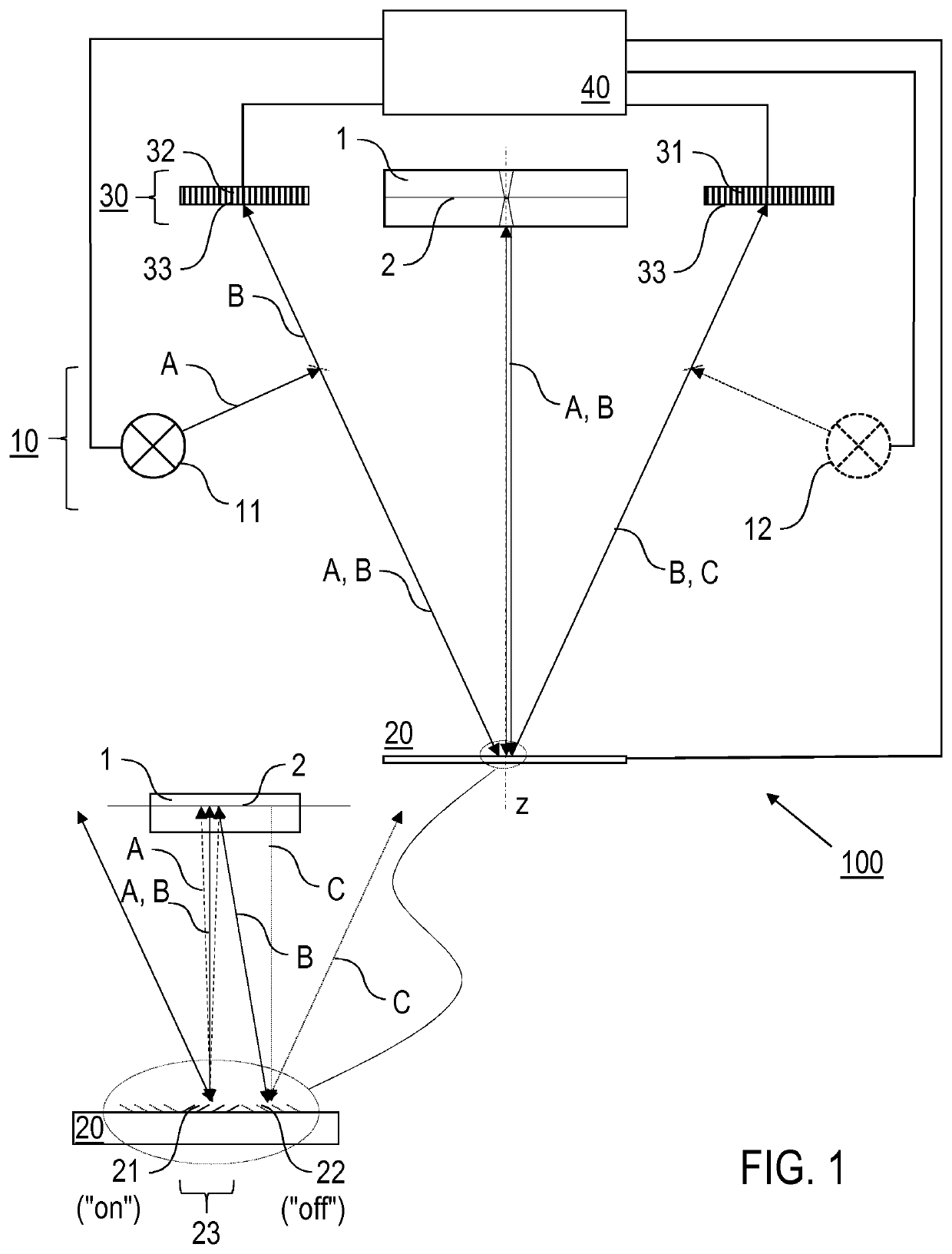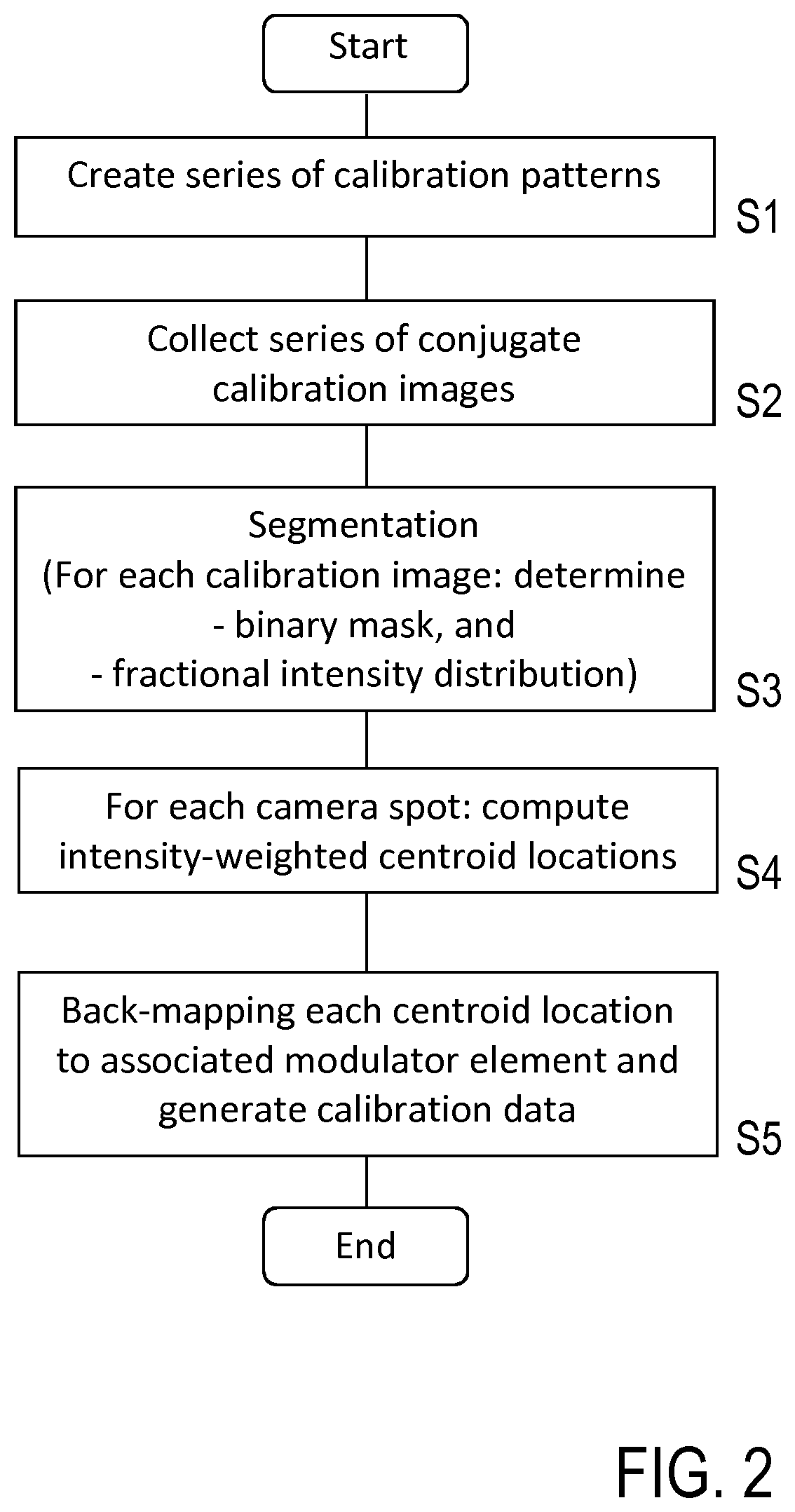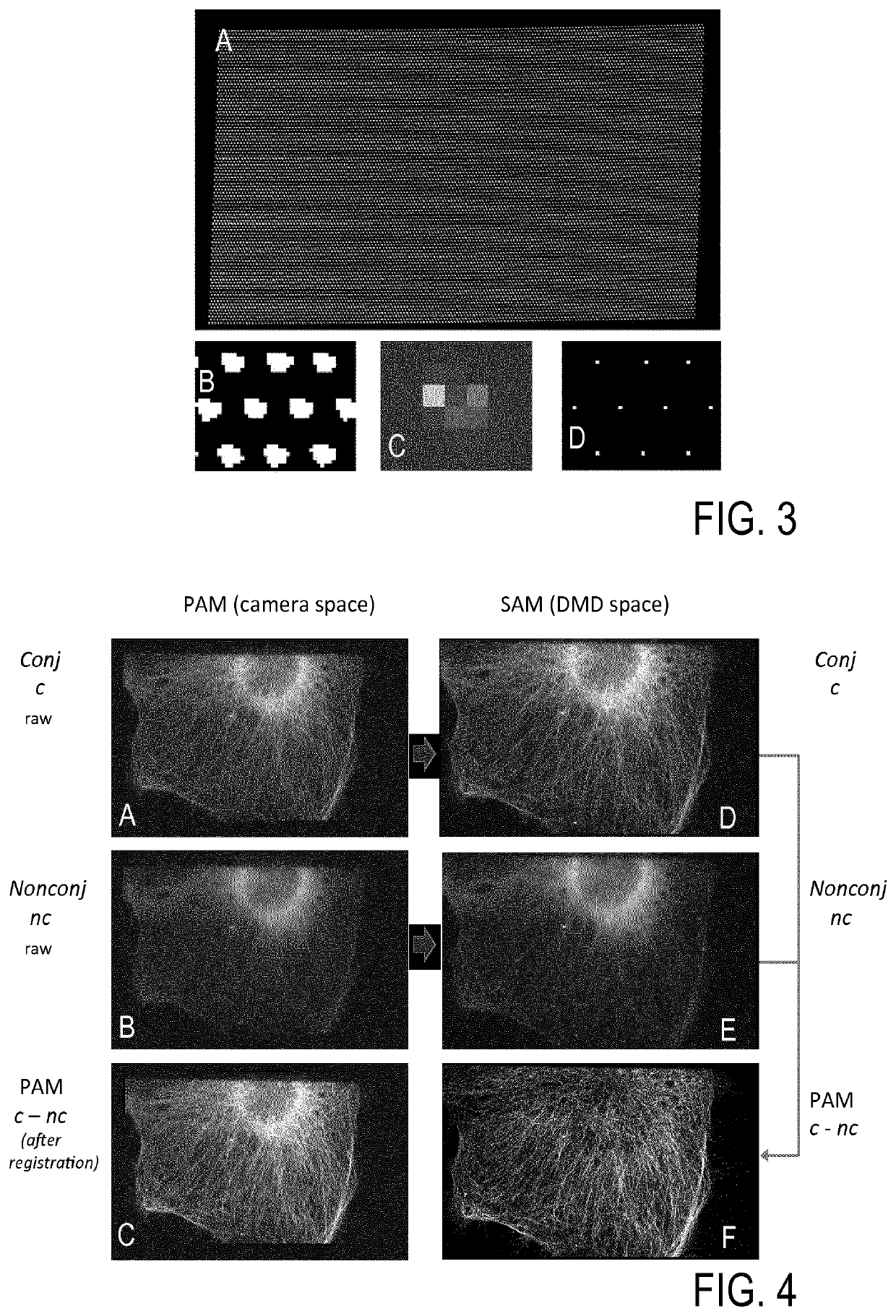Method and apparatus for optical confocal imaging, using a programmable array microscope
- Summary
- Abstract
- Description
- Claims
- Application Information
AI Technical Summary
Benefits of technology
Problems solved by technology
Method used
Image
Examples
Embodiment Construction
[0041]The following description of preferred embodiments of the invention refers to the implementation of the inventive strategies of individual image acquisitions, while trading speed for enhanced resolution, on the basis of three PAM operation modes, all of which retain optical sectioning. They incorporate acquisition and data processing methods that allow operation in three steps of improving lateral resolution of imaging. The first PAM operation mode (or: RES1 mode) is based on employing the inventive calibration, resulting in a lateral resolution equal to or above 200 nm. The second PAM operation mode (or: RES2 mode) is based on employing the inventive extraction of the conjugate image from the non-conjugate camera channel, allowing a reduction of the illumination aperture and resulting in a lateral resolution in a range from 100 nm to 200 nm. The third PAM operation mode (or: RES3 mode) is based on advanced fluorescence techniques, resulting in a lateral resolution below 100 n...
PUM
 Login to View More
Login to View More Abstract
Description
Claims
Application Information
 Login to View More
Login to View More - R&D
- Intellectual Property
- Life Sciences
- Materials
- Tech Scout
- Unparalleled Data Quality
- Higher Quality Content
- 60% Fewer Hallucinations
Browse by: Latest US Patents, China's latest patents, Technical Efficacy Thesaurus, Application Domain, Technology Topic, Popular Technical Reports.
© 2025 PatSnap. All rights reserved.Legal|Privacy policy|Modern Slavery Act Transparency Statement|Sitemap|About US| Contact US: help@patsnap.com



